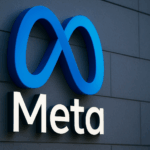In an era marked by economic uncertainty and fluctuating consumer confidence, Sezzle has unveiled new financial tools designed to assist consumers in navigating the pressure. As the global economy grapples with challenges, companies continually adapt to meet consumer needs. Sezzle’s recent rollout of its financial tools is a notable strategy reflecting their commitment to aiding customers in managing economic strain effectively. These new tools aim to offer enhanced convenience and savings for consumers, further establishing Sezzle’s role in the evolving financial technology landscape.
Earlier discussions around Sezzle focused on their innovative approach to expanding payment options beyond traditional methods. Historically, the buy now, pay later (BNPL) industry concentrated on short-term credit solutions for low-income consumers. Sezzle, like its contemporaries Affirm and Klarna, has transitioned to offer broader solutions, catering to a wider audience. Today, a significant portion of BNPL users, including those earning over $100,000 annually, benefit from its convenience. This trend marks a significant shift in how financial services are offered and consumed in the market.
How Do Sezzle’s New Features Aim to Help Consumers?
Sezzle’s new suite of features is explicitly crafted to support consumers under financial stress. The Sezzle Balance serves as a pre-loadable digital wallet meant to streamline repayment processes. This move is a response to record-low consumer confidence levels, where economic challenges heighten the need for efficient budgeting tools. Sezzle’s offerings reflect the changing times and evolving customer demands.
Can These Features Influence Consumer Loyalty?
The introduction of these features might play a pivotal role in nurturing customer loyalty. The Browser Extension and “Express Checkout” have been developed to reduce friction during shopping, enhancing the overall consumer experience. Charlie Youakim, Sezzle’s CEO, emphasizes delivering value through every consumer interaction, suggesting that such enhancements foster trust and repetition in consumer behavior.
“When shoppers see real savings, they come back — it’s that simple,”
he stated, addressing consumer expectations for seamless shopping experiences.
The BNPL industry’s landscape is rapidly transforming. Recent reports highlight how flexible credentials and provider-issued cards are extending the appeal of BNPL. This development comes amid findings that over 40% of consumers might skip purchasing without available BNPL options, reflecting a growing reliance on this financial model. Such statistics underscore the importance of evolving financial products to meet diverse consumer needs.
Beyond small-dollar transactions, BNPL now attracts a broad demographic, including high-income individuals. Youakim’s recent earnings report points towards Sezzle’s shift in focus towards enterprise-level merchants while maintaining mid-size business accessibility. The expansion into sectors like grocery exemplifies the payment model’s growing reach, tapping into areas where adoption was previously slow.
The landscape of consumer finance is evidently shifting. As competition heats up among FinTech companies, those like Sezzle that continuously adapt and broaden their offerings are likely to maintain a competitive edge. This expansion not only serves direct consumer needs but reflects changing purchasing preferences in a challenging economic climate. In such a dynamic ecosystem, providing tools like Sezzle Balance emphasizes the importance of flexibility and innovation to cultivate consumer engagement and satisfaction.










